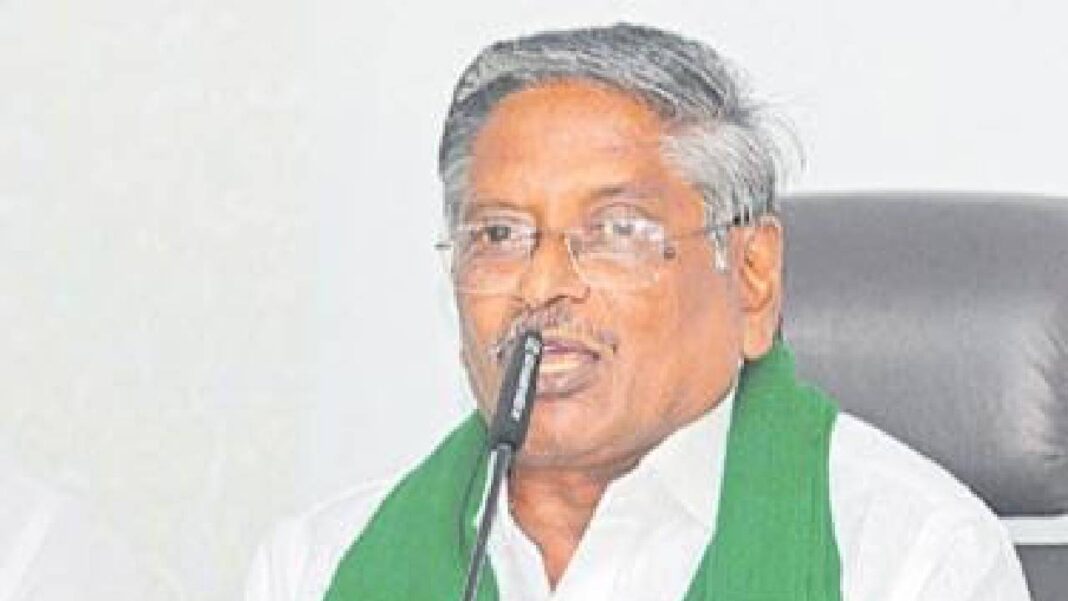DASARI SRINIVASA RAO
Vijayawada
As the Kharif season enters its third month, concerns loom over the sluggish pace of paddy sowing in Andhra Pradesh. The State, known for its agricultural prowess, has seen only 35% of the targeted paddy sowing completed thus far, raising worries among farmers and officials alike.
The ambitious goal of sowing paddy across 15.88 lakh hectares in the State has proven to be a daunting task. Presently, the paddy plantation has covered a mere 5.48 lakh hectares, marking a significant decline of 1.18 lakh hectares compared to the previous year’s progress at the same time.
The delay in the arrival of the South-West monsoon, coupled with a deficit in rainfall, has been identified as the chief culprit behind the slow-paced paddy sowing. Despite preemptive measures, including the release of irrigation water into canals by the State government, the shortfall in precipitation has hindered progress.
Deficit rainfall has been predominantly observed in districts like Dr BR Ambedkar Konaseema, West Godavari, SPSR Nellore, Sri Satya Sai, YSR, Annamayya, Chittoor, and Tirupati.
According to the latest Agricultural Department report, paddy is currently at the transplantation stage, with officials anticipating the completion of the target area within the next month. Recent rains have replenished major reservoirs across the State, offering hope for improved irrigation.
Srisailam, a vital reservoir, currently holds 87.04 TMCs of water, reaching 953.10 feet in depth against its Full Reservoir Level (FRL) capacity of 215 TMCs at 885 feet. Similarly, Nagarjuna Sagar contains 140 TMCs, while the Pulichintala Project has water storage of 33.93 TMCs. Notably, the Water Resources Department is also supplementing irrigation efforts by drawing water from River Godavari through the Pattiseema Lift Irrigation Scheme.
In light of the big target set for paddy sowing, the actual progress stands at 5.48 lakh hectares, constituting 35% of the total intended area and 79% of the corresponding period. Among the districts, East Godavari stands out with the highest paddy sowing rate of 81%, covering 64,127 hectares against a normal of 78,789 hectares.
Krishna district, with a normal sowing area of 1.68 lakh hectares, has completed sowing on 89,104 hectares, or 53%. Other districts like West Godavari, Dr BR Ambedkar Konaseema, Kakinada, and Srikakulam have achieved 51%, 50%, 47%, and 45% of their respective targets.
Conversely, SPS Nellore and Tirupati districts have excelled in paddy plantation, surpassing their normal sowing areas by 113% and 102% respectively.
MVS Nagi Reddy, Vice Chairman of the Andhra Pradesh Agriculture Mission, attributed the sluggish paddy sowing pace to deficit rainfall. He said that recent rains had aided the major reservoirs’ levels but acknowledged the natural fluctuations in crop cultivation due to climatic conditions. He expressed optimism that paddy sowing would be completed by the second week of October, traditionally the cutoff period.
Reddy also highlighted the government’s encouragement of farmers to transition towards horticultural crops, citing the Central government’s Minimum Support Price (MSP) as inadequate for meeting agricultural expenses. He urged farmers to explore alternatives like Palm Oil, Mirchi, Tomato, and various vegetables to ensure sustainable livelihoods.




